“To plant a garden is to believe in tomorrow.” – Audrey Hepburn
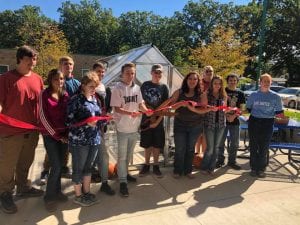
The students of Allegan Alternative aren’t always experts at thinking ahead.
But who am I kidding – are any of us?
While this critical thinking skill is in high demand in today’s workforce, many struggle to relate today’s decisions with tomorrow’s possible realities. My at-risk students should know this, as they have seen how quick, impulsive decisions can result in long-term, unforeseen consequences. Important as this skill may be, it isn’t an easy one to cultivate. Thinking ahead requires experience with data analysis, learning to see from multiple perspectives, and the ability to connect cause and effect. Maybe most of all, it requires a strong imagination.
For the past two school years, the students of our Outdoor Education class have been “imagining” a school greenhouse to help with the city’s community garden. So when the Educational Foundation awarded this year’s class with a mini grant for their very own 6’ x 8’ greenhouse kit, they became ecstatic with the opportunity to bring their imagination to life:
“We can grow one of every single flower!”
“There will be so many veggies, our salad bar will overflow!”
“People are going to want to buy stuff from us all year long!”
The imagination in the room was alive, and it was wild. Over the first few days of discussion, it only grew wilder. The students could think ahead about potential future scenarios, but they were genuinely struggling to imagine realistic, achievable scenarios. A small 6’ x 8’ greenhouse couldn’t possibly hold every species of flower, nor sustain our salad bar for even a week. While I was loving the passion in their grandiose ideas, it truly made me nervous that their imaginings couldn’t tie in the real world data given to them in order to set achievable goals and plans for this project.
So, we started imagining together.
First, we needed to absorb and analyze more data relevant to our project. In other words, we had to put more greenhouse-related information into our brains for our imagination to pull from. We learned about the types of greenhouses available, researched and field studied commonly grown garden plants, and inquired local gardeners for their secret planting tips. Then, we used this new knowledge to split into three different teams depending on the role each student felt most passionate about: Construction, Interior Design, and Plant Selection.

Next, we had to take inventory, and plan. While the construction crew opened our greenhouse kit to read through the instructions, plant selection began to sort seed packets for different species options, and interior design started taping a 6’ x 8’ blueprint to the floor to get a feel for the true size of the greenhouse. It was in this moment that many overzealous ideas began to be questioned, and fall away to more reasonable imaginings:
“Oh, it’s only this big?”
“How are we going to fit this many species?”
“Will a person even be able to stand up inside?”
The ideas in the room adjusted quickly to the information our brains had been given. The construction crew changed their estimated time of completion from 14 days to 6. Interior design changed the size of their shelving units, and rearranged their original blueprints. The plant selection team narrowed the focus of the greenhouse to 10 or less species, ultimately deciding to emphasize this first harvest on peppers, peas, and marigolds. Now, imaginations were aligning with realistic expectations.

As our final preparations came together, and a completion date was finalized, I let the students in on a secret: We would be hosting a ribbon cutting ceremony for community members to join us for the grand opening of our greenhouse! I had confirmed with the Allegan Chamber of Commerce a date and time to host the ceremony, and showed students photographs of past ceremonies with red ribbons and giant scissors.
“So people are going to come and see this thing when it’s done?”
That put the pressure on. Now the students had people coming to see their creation, and that meant it had to be ready. More than ready. It had to be beautiful.
The construction team went right to work. With only a sole hour of Outdoor Education each day, several recognized the constraints of their deadlines, and requested to be called into my classroom during our remediation period. Interior design requested a shelving and bench order be put in immediately, and subtly demanded two-day shipping. Plant selection asked for already sprouted plants to be purchased to give the greenhouse some green, and not just soil with seeds. They were thinking ahead, imagining the scenario we had created together and making decisions now that had an effect on that future.


As the pieces came together, so did the students. The construction team began to talk with interior design, and interior design with plant selection, recognizing the teams’ dependence on each other. In the final days of constructing, decorating, and planting, the energy in the room was collaborative and focused as students were truly invested in their project.
On the day of the ribbon cutting, students brought in delicious, garden themed desserts, colored the picnic tables with flowers, and covered our courtyard with yard games. The greenhouse was paired with pumpkins, a ribbon hung across it’s door, and community members started to roll in. Students were ready to show, after weeks of imagination and hard work, a creation they had believed into life.

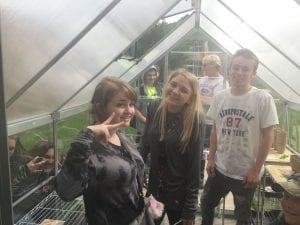
We are all so grateful to Tim Perrigo, the Educational Foundation of APS, and each individual who supported us in the building of our greenhouse. Take a look at some moments from our celebration below!
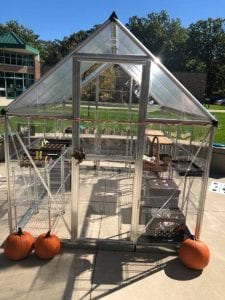
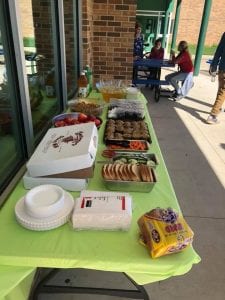
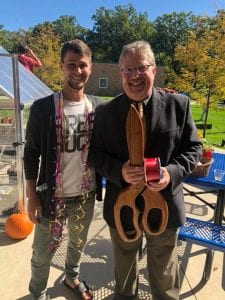
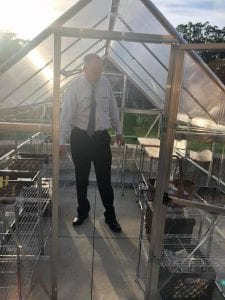
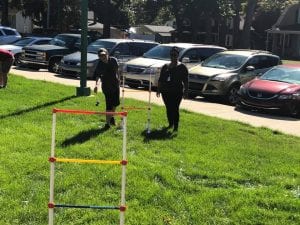

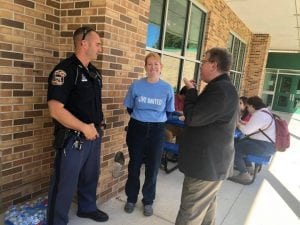
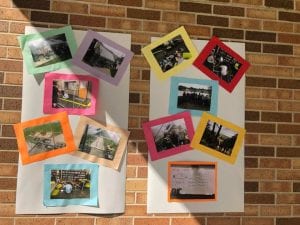
Written by Aaron Rogers, Dean of Students